
Thank you for the comment. We can surely help you plan your trip and curate the itinerary that suits you. How many days and what specific destinations are you looking at?
2,474 views
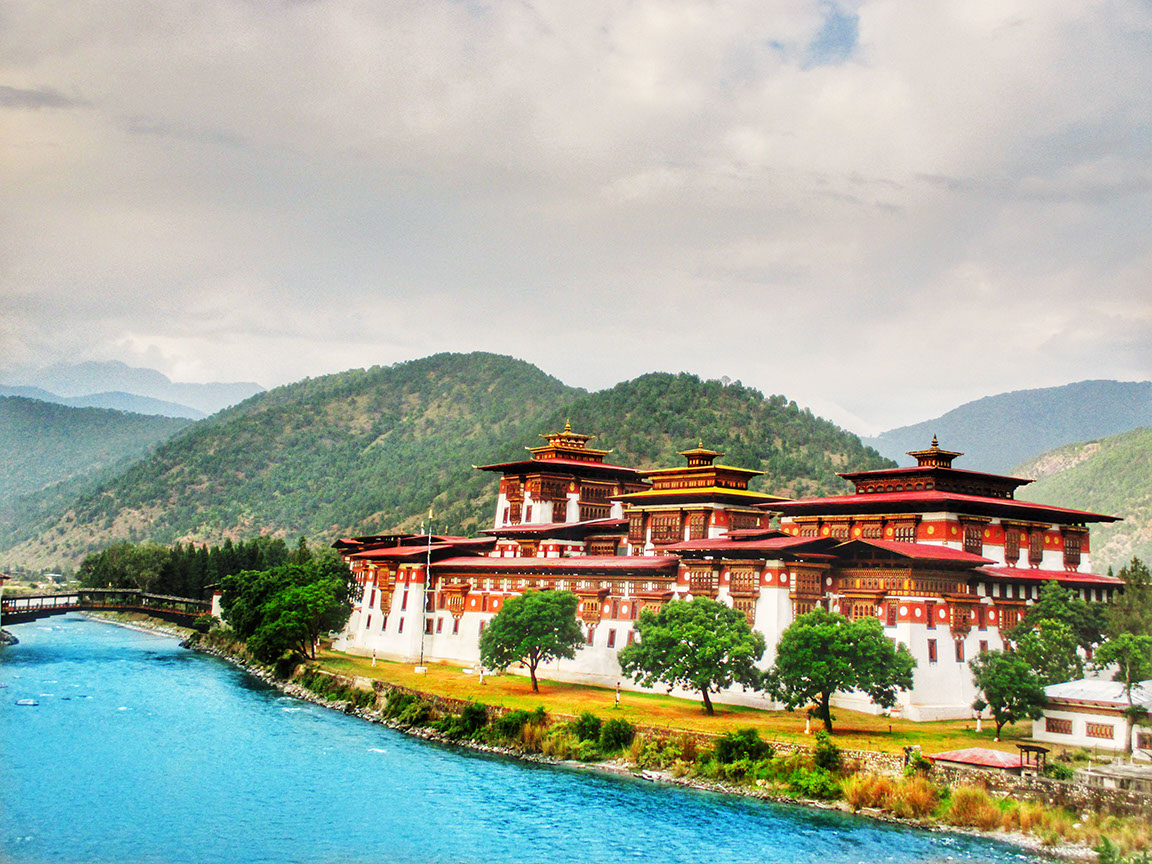
“Druk Yul” meaning “The Land of the Thunder Dragon” is how Bhutan is popularly known. Mythology has it that large thunderstorm that whip down from the Himalayas are red fire of a dragon, hence ancient people of Bhutan called it the land of Thunder Dragon.
If you are interested in visiting Bhutan then I presume you are a nature lover. The best mode of travel from India to Bhutan is by road. The drive comprises tough terrain and varying landscape and is a fantastic experience.
Bhutan is a landlocked Himalayan country that adjoins northeast part of India and sparsely with China. Environmental protection and cultural preservation make Bhutan a pristine beauty with hardly any factories causing pollution. Being in the Himalayan Mountains, it has long rivers full of water throughout the year. Hence, the biggest industry of Bhutan is hydropower.
There are few border crossing points while traveling by road, the most popular being Phuntsholing town that is bordering with Jaigaon of West Bengal, India. For the less adventurous, there are flights to Bhutan. The only entry point by air is Paro Valley. Druk air of Bhutan and other international airlines fly to Paro a few times a week. The highest frequency is between Indian major cities (mostly from the eastern states) and Paro.
We flew to the nearby airport of Bagdogra (Siliguri) in West Bengal and then drove to Phuntsholing, a 4-hour drive. The distance between Siliguri to Thimphu is 320 km so; we decided to break the journey. You do not need visa/permit to visit Phuntsholing. Phuntsholing and Jaigaon are like twin towns so you can choose to stay at either place. However, we chose to book a hotel in Phuntsholing as it had better options. We stayed at Hotel Park in Phuentsholing, which is a great location for taking a stroll around the shops and experiencing Bhutanese culture firsthand. The border gate to Phuntsholing remains closed between 10 pm to 6 am. These times vary so check timings and plan your entry and exit accordingly. Bhutan government has an office at Phuntsholing to issue the tourist permit to Indian citizens. There is a substantial rush at the permit office especially during peak season and you may end up spending the whole day in Phuntsholing. Please be aware of national holidays during which the permit office remains closed.
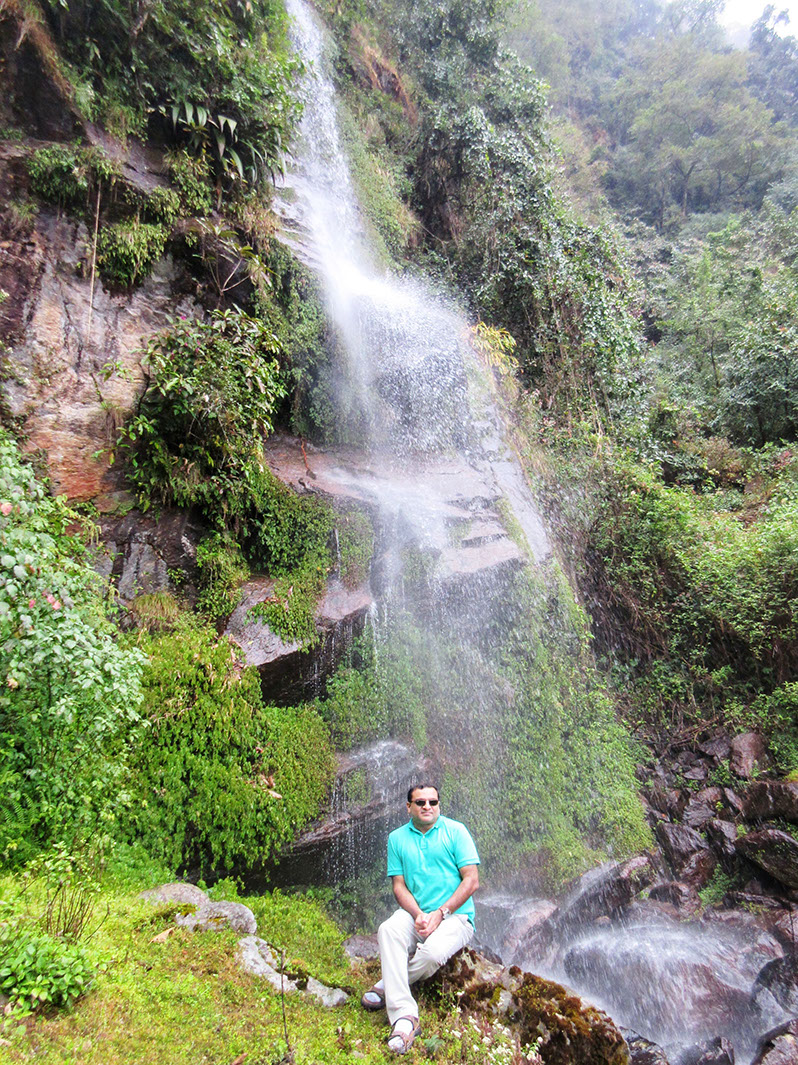
On the way from India to Bhutan
The best way to optimize your time and reduce your stay at Phuntsholing is to be ready with filled-up forms and documents when the office opens in the morning. You are likely to get your permit delivered in the afternoon or may be earlier. Alternately, you can arrive the previous day evening and submit the application and obtain the permit the next morning. Please keep in mind that the permit issued at Phuntsholing is valid only for Paro, Thimphu and Punakha and for a period of 7 days. If you plan to travel beyond Punakha and/or stay for more than 7 days, then you must obtain an added permit from Thimphu. We got a renewed permit from Thimphu to visit beyond Punakha but forgot to apply for the extension of our stay and were fined Nu 500 per person for each additional day of our stay. Keep yourself updated with the latest policy of the Government of Bhutan prior to traveling.
After obtaining a permit at about 11 am we set out on our exciting road trip to explore Bhutan for the next 10 days. We traveled in October, immediately after the monsoon, which I feel is the best time to visit Bhutan. We were literally speechless during the first hour of our road trip seeing nature in all its grandeur. We silently soaked in this enchanting land; nature's undisputed paradise on earth. Before we knew it, we had reached a high altitude. This being the main highway connecting Bhutan and India, there was some traffic en route but at no time did we feel insecure on the road. Traveling through narrow and curvy roads, beautiful landscape and thick clouds around us got us utterly excited. The distance between Phuntsholing to Thimphu is 165 km, but it took us 5 hours to reach Thimphu. The distance from Phuntsholing to Paro is the same so you can start your journey either way.
Bhutan Wanderlust: beginning of a beautiful journey through varied landscapes
Our original plan for Thimphu was only one day, but it turned out to be the Dussera holiday. We were surprised to discover that Bhutan observes a holiday for Dussera, an Indian festival. Due to the holiday, we had to wait one day to apply for our permit to travel beyond Punakha. We had more time to explore Thimphu because of this, but our hotel was pre-booked for the next day due to peak season. We were able to book a homestay through our driver, since not all hotels in Bhutan could be booked online at that time. You can now easily book a hotel in Bhutan online.
Thimphu is the capital of Bhutan and is also the largest city in Bhutan, located at an altitude of about 8,000 feet. I am not a big fan of spending a lot of time in the capital cities because they are crowded with tourists and offer very little to off-the-track tourists. However, there are a few things to do in Thimphu.
Perched atop the Kuensel Phodrang hill, Buddha Dordenhma in Thimphu stands tall, emanating a brilliant golden radiance that fills the sky. The awe-inspiring 50 meter statue symbolizes peace and harmony of the nation as it rests within the lap of mighty Himalaya ranges. This astounding statue is composed of bronze and plated with gold and completed with detailed terracotta tiles that marvels many generations beginning from 1907 to future times.
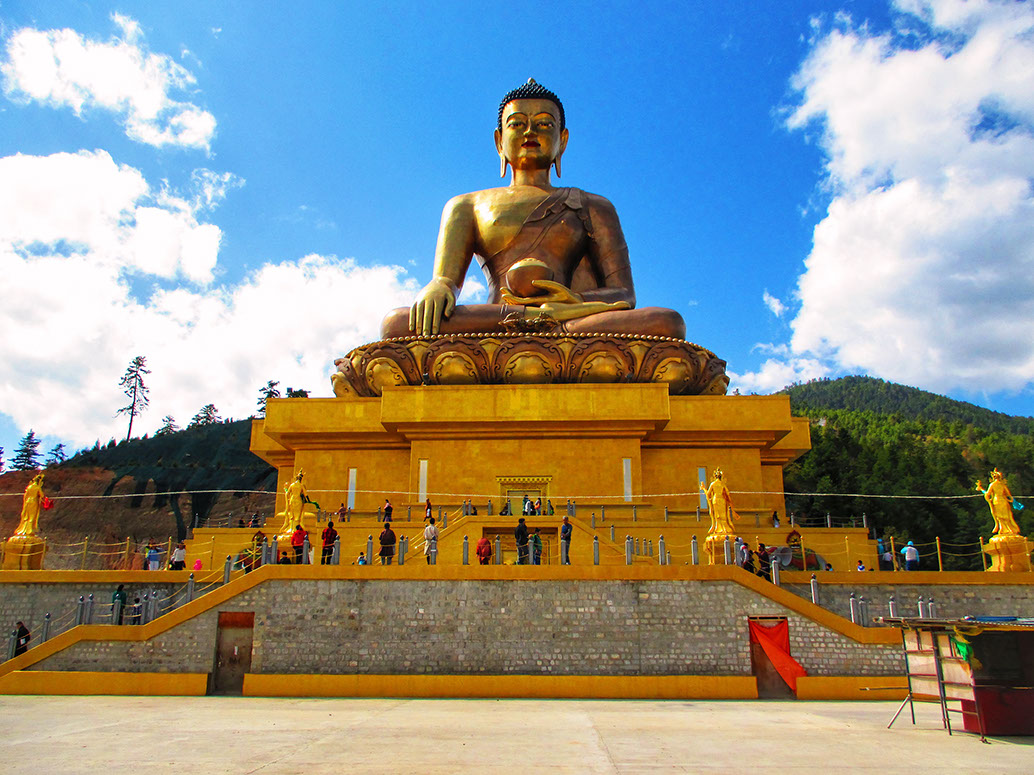
The statue of Buddha Dordenma atop the hill in Thimphu
There is an invisible museum inside the statue. It houses more than 100,000 smaller statues of and 125,000 prayer shrines adorning each corner, making it truly an exquisite wonder of the world.
The view of Thimphu city from the top of Kuensel Phodrang is truly breathtaking. From this vantage point, you can see the capital in all its glory - from the modern buildings and infrastructure that show off Bhutan's growth and development, to the lush greenery growing between them. What makes this view even more impressive is that it remains largely unspoiled despite years of urbanization in Thimphu.
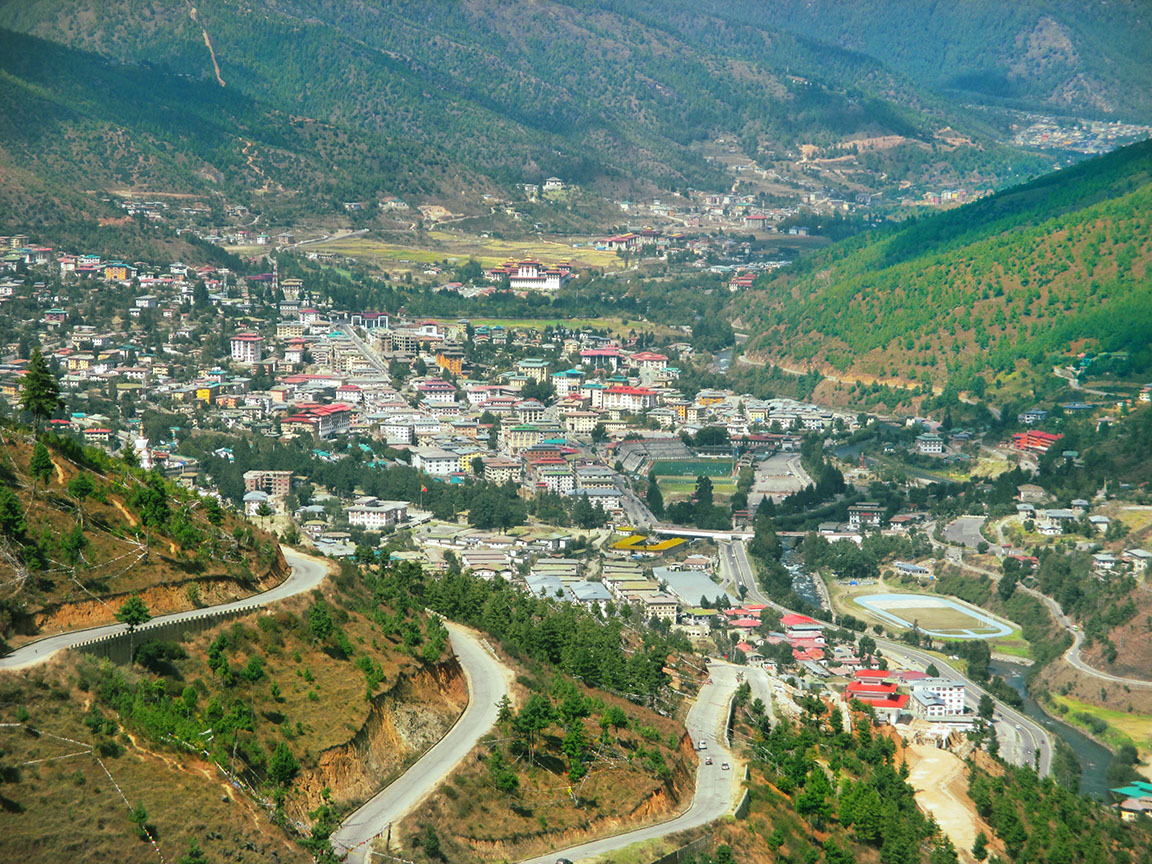
Beautiful capital of Bhutan from the top of Kuensel Phodrang. The only capital city in the world without traffic lights
Bhutan, a tiny and undiscovered Himalayan country till the 1960s, suddenly made international headlines for innovative postage stamps during 1960s and 1970s. They made postage stamps out of plastic with 3-dimensional effect and from other non-paper material like steel, silk, plastic mould, vinyl gramophone records, aluminum foil, gold foil, etc. Not only was it a sensation in the world of philately but also helped Bhutan in fundraising for its infrastructure development program. Thimphu hosts one of the most interesting Philatelic Museums in the world, telling a hidden story of how its stamps program evolved. I, being a philatelist, was quite fascinated with this place. I am sure you will cherish this experience even if you are not a philatelist. You can easily spend 2-3 hours here and discover something that put Bhutan on the world map.
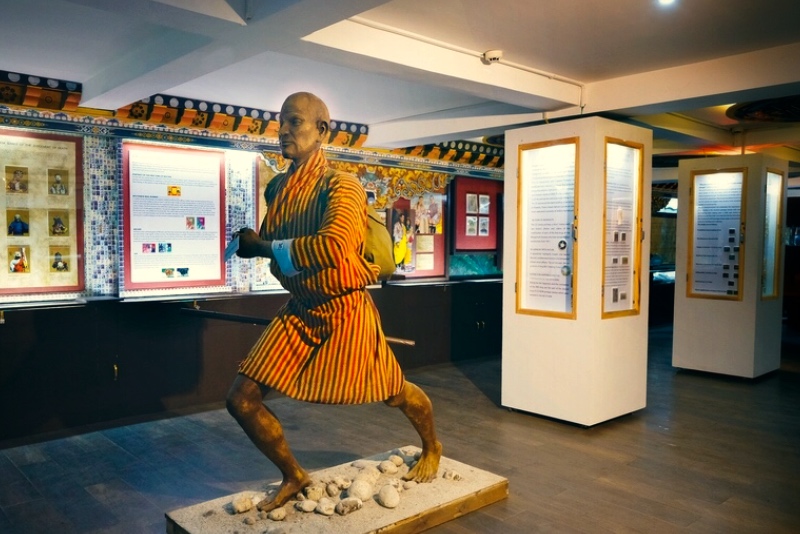
Bhutan postal runner statue with its traditional attire at the postal museum in Thimphu
We also visited Takin Preserve. Takin is a national animal of Bhutan, which is in the IUCN Red List (vulnerable). Motithang Takin Preserve hosts the Takin and many animals and birds native to Himalayan mountain range.
The tall statue of Buddha on a hilltop of Thimphu
Holding our extended permit from Thimphu we journeyed towards Punakha, an old capital of Bhutan till 1955. On the way to Punakha you will pass through Dochula Pass. It is a mesmerizing place that hosts 108 memorial Chortens (also called "stupas") known as "Druk Wangyal Chortens" for each soldier's life lost in the war. It also offers a stunning panoramic view of Himalayan mountain peaks like Masaganang (7,200 meters), Kangphunang (7,170 meters), Tsendagang (6,960 meters), Jejegangphugang (7,158 meters) and Terigang (7,060 meters). You would need a clear day to see these peaks from Dochula Pass, but we were not lucky enough on both our visits to Dochula pass in a span of 7 days.
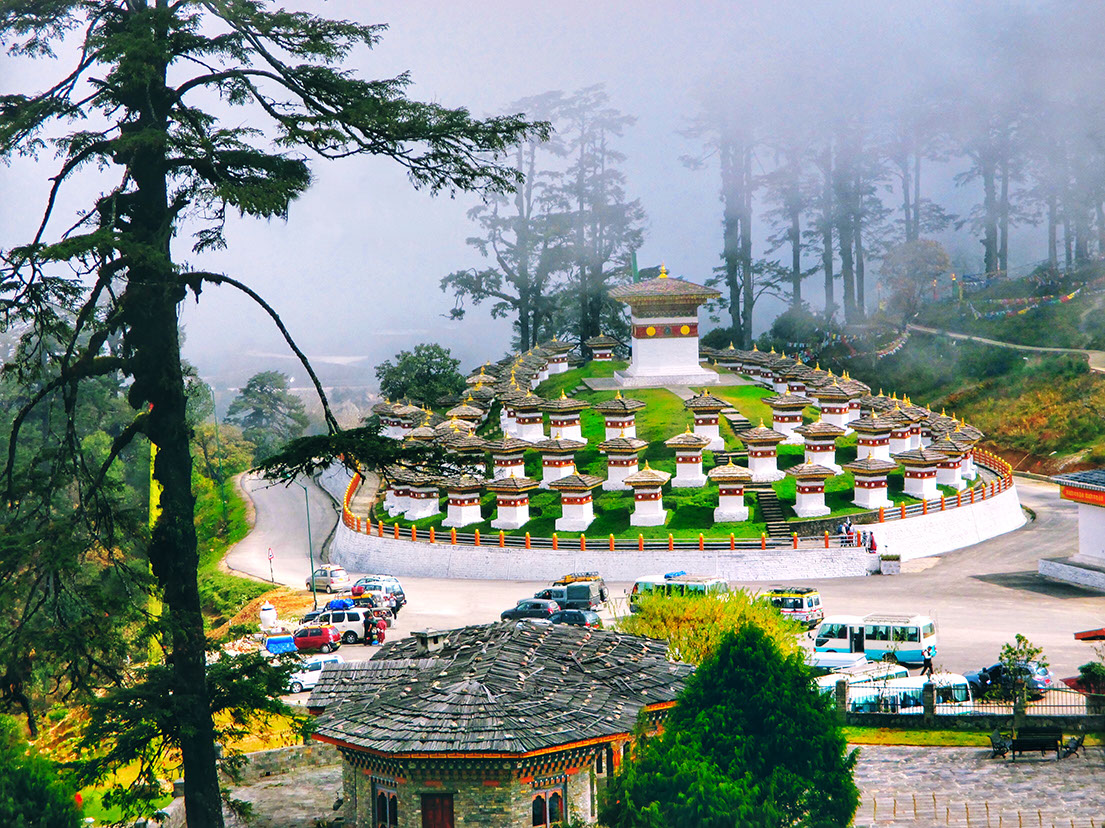
108 Chortens at Dochula Pass at 10,000 feet remain cloud covered most of the time
This is another stunning drive in Bhutan. You will drive almost parallel to the crystal-clear river Puna Tsang Chu (also known as "Po Chhu") that is surrounded by lush green paddy fields. You can also do river rafting here which is a seasonal activity. Tourists usually visit Punakha from morning to evening and then return to Thimphu. Instead, we stayed here for two days and enjoyed the serenity. Our accommodation was at Meri Puensum Resort, which is located on a beautiful hillside.
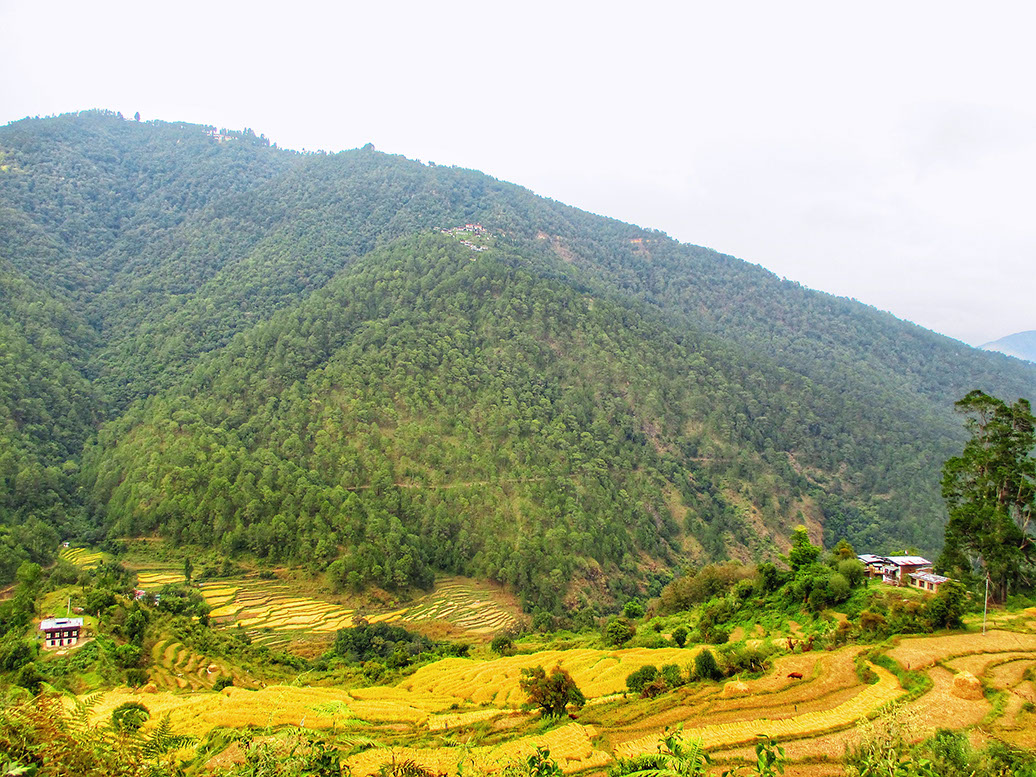
A view of lush paddy fields from the balcony of our Punakha hotel room
Punakha is famous for its beautiful Dzong, also known as Pungthang Dewa Chhenbi Phodrang. It is an administrative center of Punakha district and is the second oldest and second largest Dzong of Bhutan. It is built at the confluence of two rivers, Pho Chhu and Mo Chhu and has a spellbinding view. The Dzong is equally beautiful from inside and is still functional. It closes at 5 pm (check the latest timing) in order to plan your visit accordingly. Have you ever wondered why was Punakha Dzong built? Punakha remains less cold during winter and hence, it is the winter residence for the royal family.
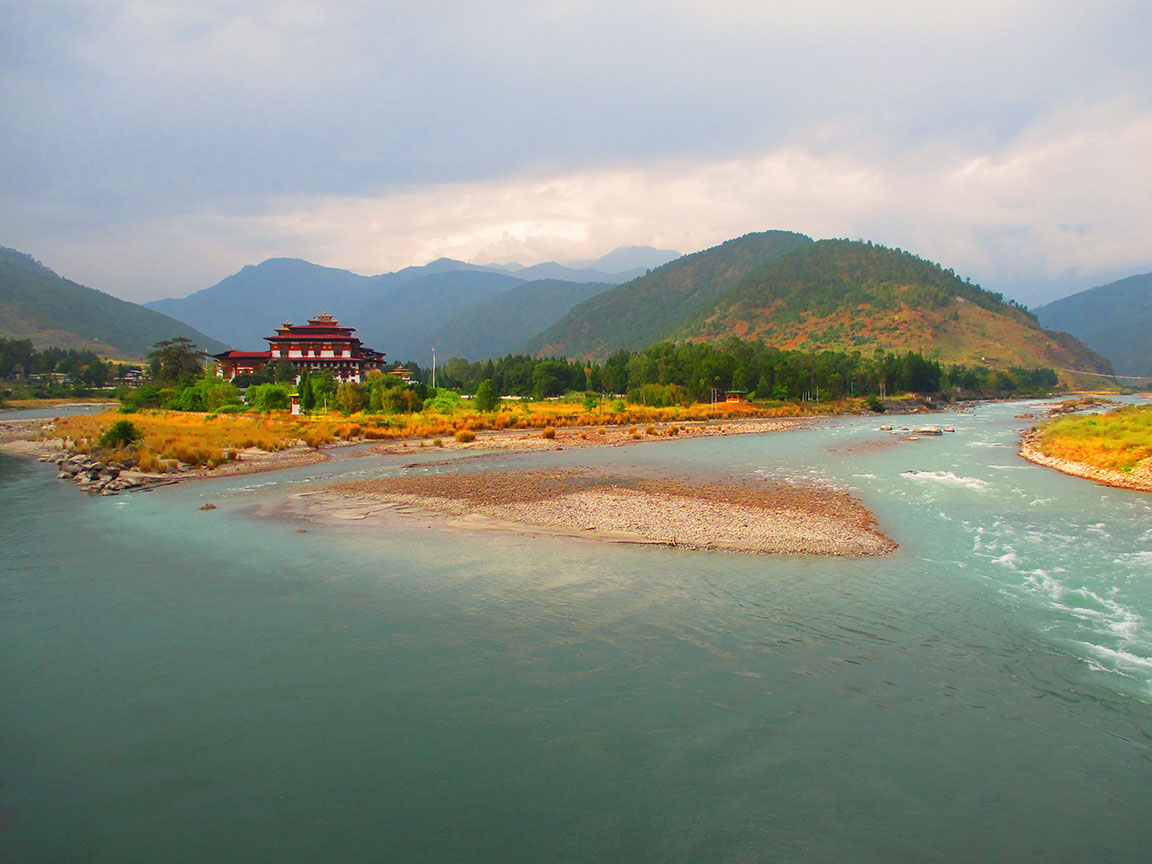
The importance of Punakha Dzong lies in its majestic structure built at the confluence of two rivers
Another must visit place here is the "Punakha Suspension Bridge". It is a modern marvel of construction in a country like Bhutan, which has preserved most of the old architecture. It is 160 meters long connecting the two ends between the Po Chhu River. Walking across this shaking bridge is nerve-racking but thrilling! Brace up and do it and you will have no regrets. The view of the river is spectacular and keeps you distracted. When we reached the other end of the bridge it started raining heavily so we had to take shelter at a small coffee shop until the rain stopped. Almost 45 minutes later, we headed back across the bridge with the daylight quickly fading and this was a different experience.
This is the reason Punakha is the winter capital of Bhutan
Bumthang (translated beautiful field) is a district in the central part of Bhutan. The capital city of Jakar has a small airport with daily flight connectivity to Paro. Bumthang district is quite big and you will enjoy staying in some of the hotels slightly away from Jakar as they offer you a picture postcard landscape and tranquil environment.
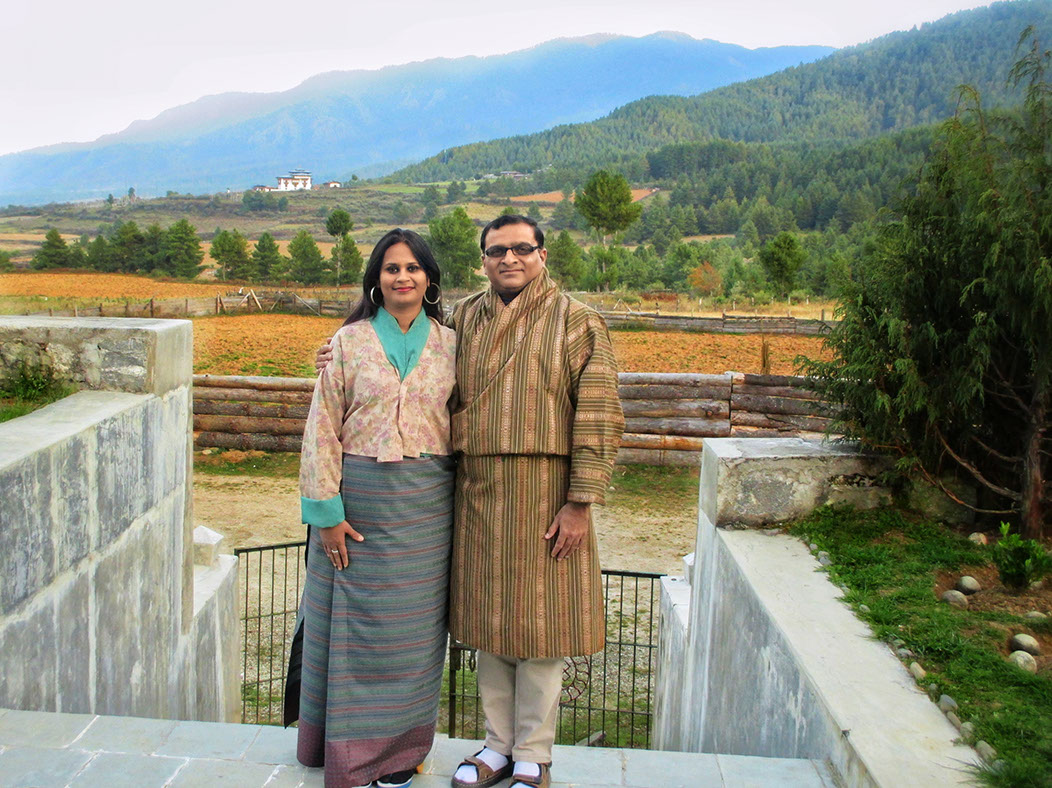
My wife and I in Bhutanese traditional attire at Chumey Nature Resort
The places of interest in Bumthang would be Jakar Dzong and Mebar Tsho (the Burning Lake). We also went for a long drive towards Ura valley and that was a memorable experience. The actual beauty of Bumthang can be experienced while driving around the diverse landscape.
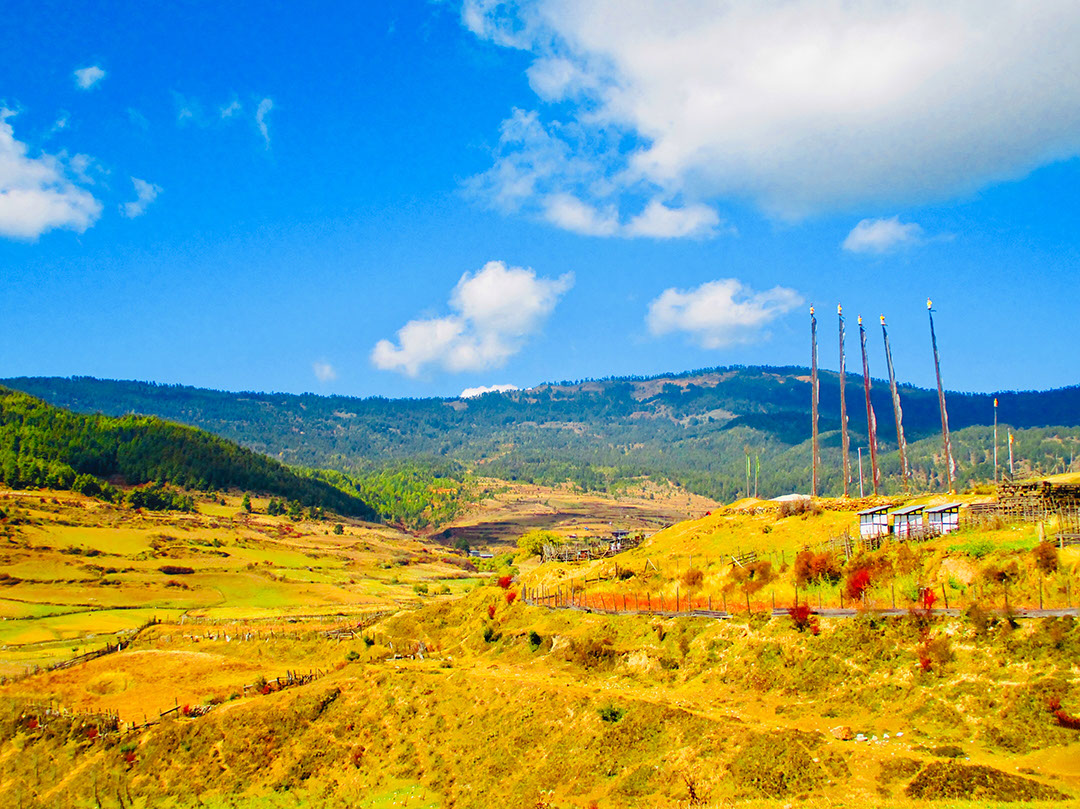
Ura Valley: Gods Canvas Painting
It is famous for the migration of black-necked cranes from Tibet during the winter. Usually, the migration starts late October to Early November and then they return to Tibet from mid February. This is one of the things to do in Bhutan in December if you are a bird lover. However, our visit was a tad early and we could not catch a glimpse of this precious bird. Phobjikha, a little known treasure of Bhutan is a large plateau. It was a welcome change for us. The temperature was relatively normal compared to sub-zero in Bumthang at 13,000 feet.
The landscape and local culture at Phobjikha Valley
We decided to stay with a local family instead of a hotel. Local organizations help facilitate this arrangement so tourists can learn more about Bhutanese culture and lifestyle. We were warmly welcomed by a local family whose main business was potato framing. Their home was tucked away in the valley and our local driver had to make a couple of phone calls to locate the house. It turned out to be one of the secret places to visit in Bhutan. It was a small but well maintained house. We were treated to a delicious local vegetarian dinner by our generous and kind host. Surprisingly, they did not speak Hindi, but our driver played the role of an Interpreter. It was a heartwarming experience.
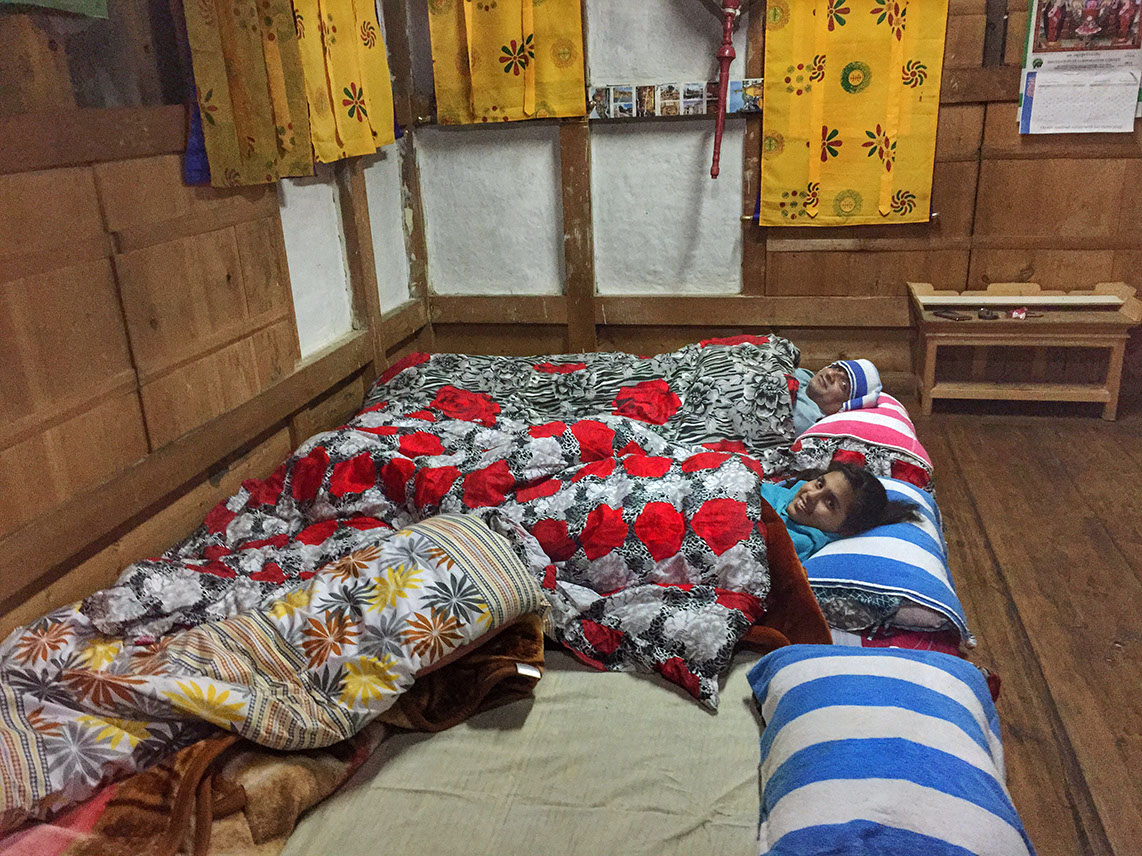
Our sleeping arrangements at the local homestay with near zero degree Centigrade temperature
Wondering if we ever went to Paro? Yes, we did but intentionally kept it as the last destination of our trip for two reasons. Firstly, we wanted to climb all the way to Taktsang (Tiger's Nest Monastery), which is tough so, we saved it for the end. Secondly, we had to return to Phuntsholing previous day of our return flight from Bagdodgra and the distance from Paro to Phuntsholing is ideal compared to driving down from a far away place. Having arrived in Paro late evening, we relaxed at Metta Resort & Spa before heading out for our hike the next day.
Tiger's Nest Monastery facts suggest that it was built in 1692. It is one of the oldest Buddhist monasteries at high altitude in the world. This is where Guru Rinpoche first meditated. We started from our hotel at 7 am and it took 20 min to reach the starting point of the climb. Tiger's Nest height is about 10,000 feet while Paro is at 7,000 feet so; one needs to climb 3,000 feet. It is tough but worth the effort. I have seen many elderly people making it to the top so I believe it is truly spiritual. During the trek, you will come across many shortcuts that are steep. Avoid them unless you are an athlete and want to have a different experience. There are some sections of the hike, which are quite challenging with very narrow passages and a deep valley beneath you, so be cautious. The hike until cafeteria (almost half way) is tough compared to the second half but usually you are fresh so you can easily make it up.
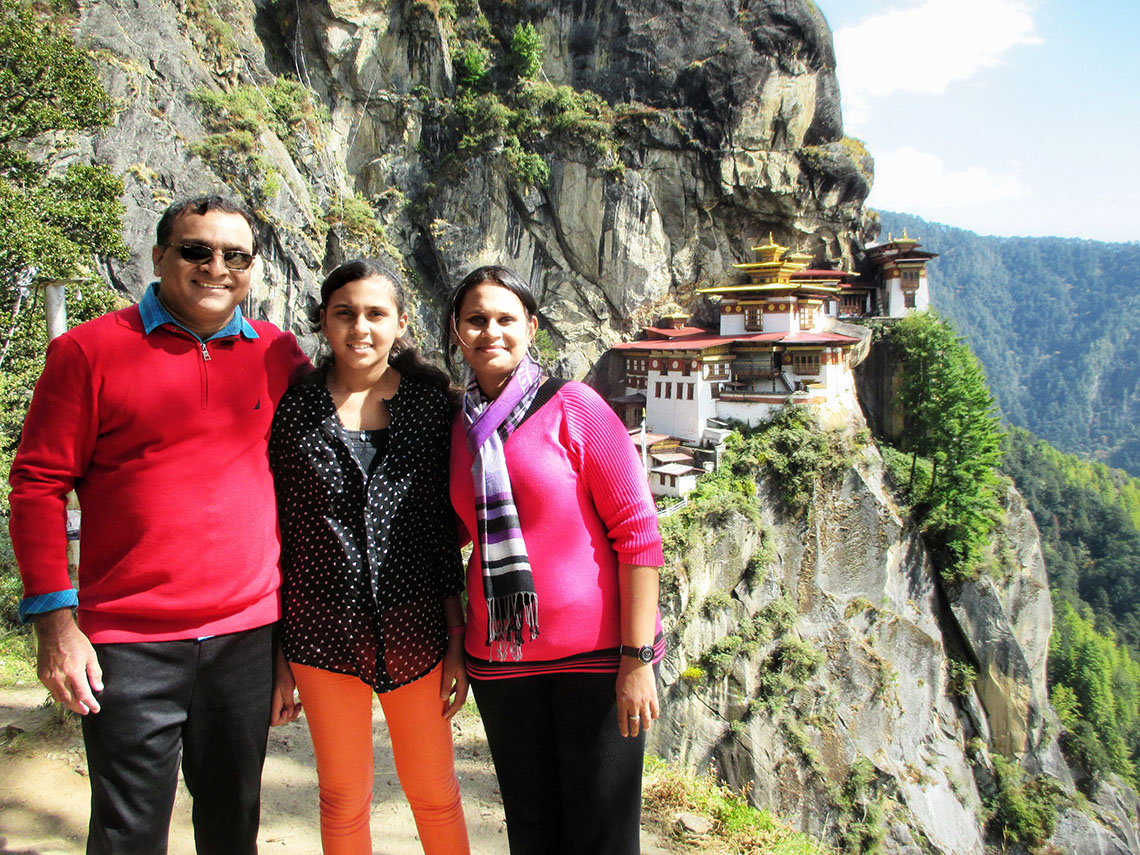
With my family, Tiger's Nest distance is just 700 steps away
But when you are coming down you will realize the difficulty. There is a ONE-WAY horse ride available only till the cafeteria for those who cannot trek. After the cafeteria, the hike is a little less stressful. Tiger's Nest distance of last 700 steps is steep and tough. Going down is relatively easier to climbing up. You are not allowed to carry camera, mobile, etc. inside Tiger's Nest Bhutan. However, there is a locker facility available to store your belongings. Carry your own lock as they may not have locks. Dress modestly when you visit the monastery. The interior of the monastery provides a brief history of Taktsang. Overall, the round trip journey takes between 6-7 hours; roughly 3.5 hours to climb, 2 hours to come down and about 1 hour inside the Tiger's Nest. Start early in the morning, before 7 am to take advantage of weather and beat the group or horses as they start after 8 am.
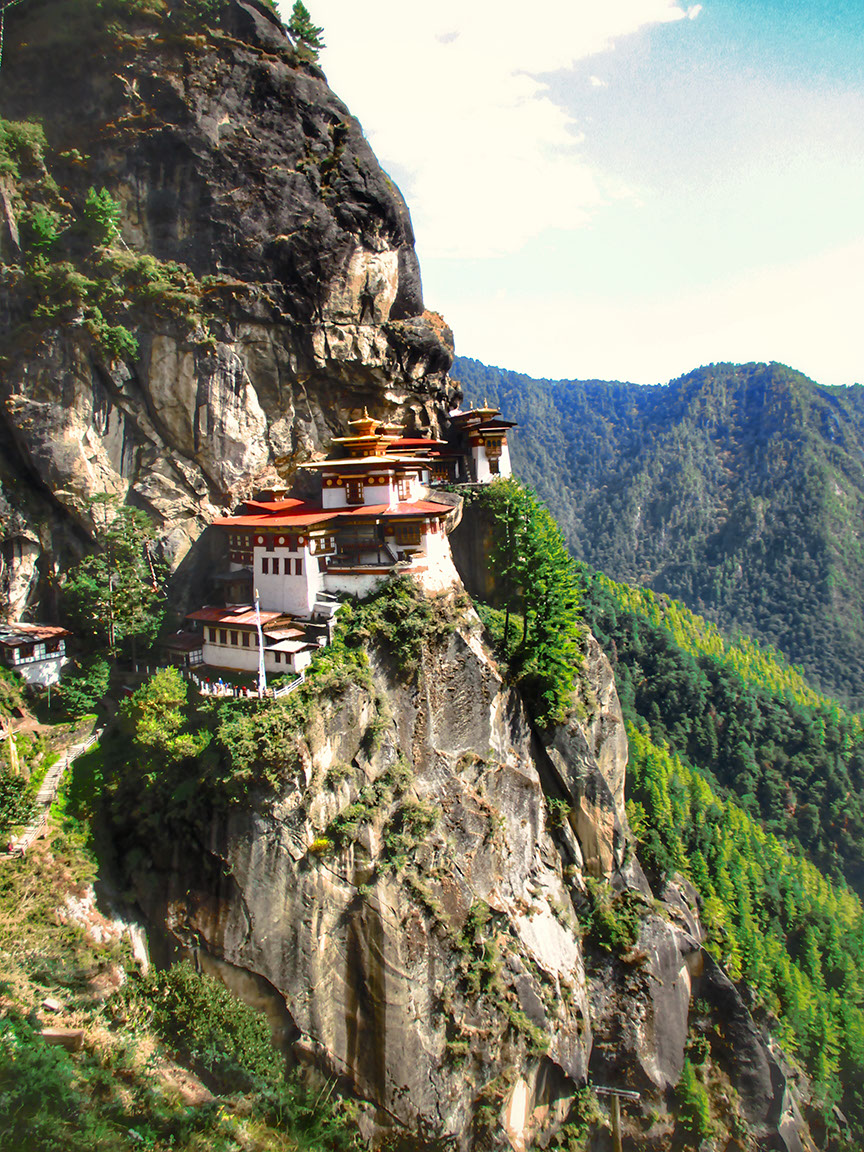
A stunning view of an ancient Buddhist Monastery: Taktsang (Tigers Nest)
Your trip to Bhutan is incomplete if you haven't visited Tiger's Nest.
Our Bhutan road trip was a truly unforgettable experience. From the vibrant cities to the majestic Dochula Pass, from the iconic Tigers Nest to the picturesque valleys, we saw and experienced some amazing sights and activities across the country. We discovered Bhutan's many cultural gems and its warm people who welcomed us with open arms. It made for an adventure that we'll never forget - one that really put life into perspective for us and encouraged us to appreciate every moment!
Why is Bhutan called the "Land of the Thunder Dragon"?
Mythology has it that large thunderstorm that whip down from the Himalayas are red fire of a dragon, hence ancient people of Bhutan called it the land of the Thunder Dragon.
Is traveling to Bhutan expensive?
It depends on where you are traveling from. Bhutan sustainability development fee is extremely high for most of the foreign nationals barring selected SAARC countries like India, Bangladesh and Maldives. A sustainable development fee of INR 1,200 per person per day will be charged to Indian nationals beginning in September 2022.
Can you drink alcohol in Bhutan?
Yes. There are no restrictions with alcohol and it is available in hotels and restaurants. However, smoking and chewing tobacco is banned in public places of Bhutan.
How many days are enough in Bhutan?
You may need 3-5 days for covering Thimphu, Paro and Punakha. However, you may need up to 2 weeks to travel deeper inside Bhutan.
Disclaimer: This blog may contain affiliate links. At no extra cost to you, we may get a small commission if you buy anything. All products and services we endorse have been personally used or come highly recommended to us. These incomes allow us to keep the community supported and ad-free.


Bhutan is in my bucket list. I will go when I can afford it. You are lucky as you do not have to pay so much.

Ha ha ha. Yes, it is an advantage for the nationals of few neighboring countries. But now they have started levying the sustainable tourism tax from Indian as well but it is not that steep like other nationals. But it is a beautiful country to visit.


I read somewhere that you can ride the horse to reach Tigers Nest. Is it advisable and safe?

The horse takes you only half way (till the cafeteria) and one-way. The horse won not take you downhill as it is too risky. I did not take the horse so I am sorry I can not comment how safe it is to ride a horse.






Name
Email
Comment